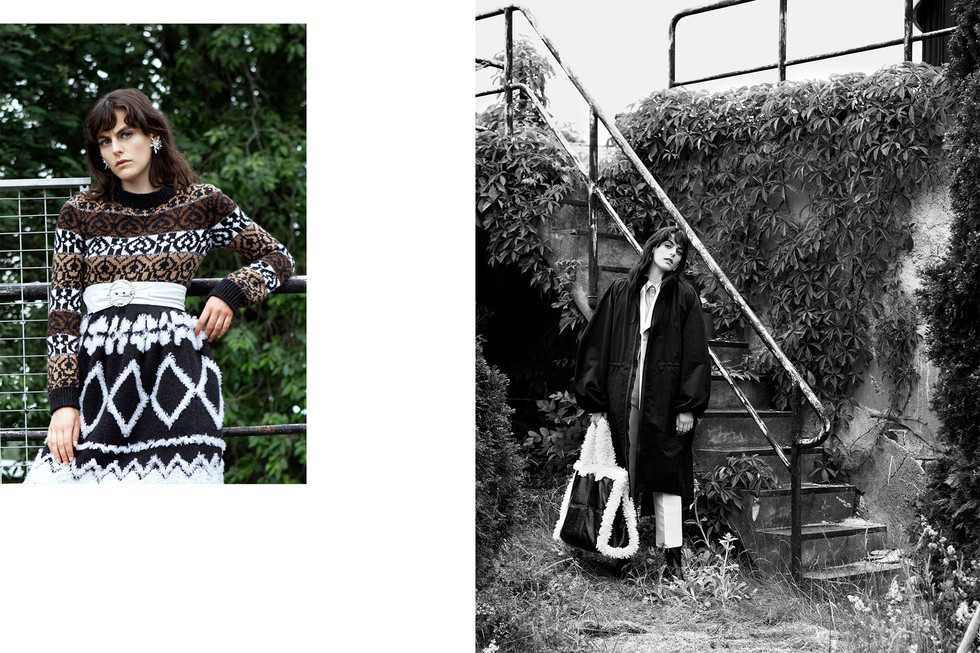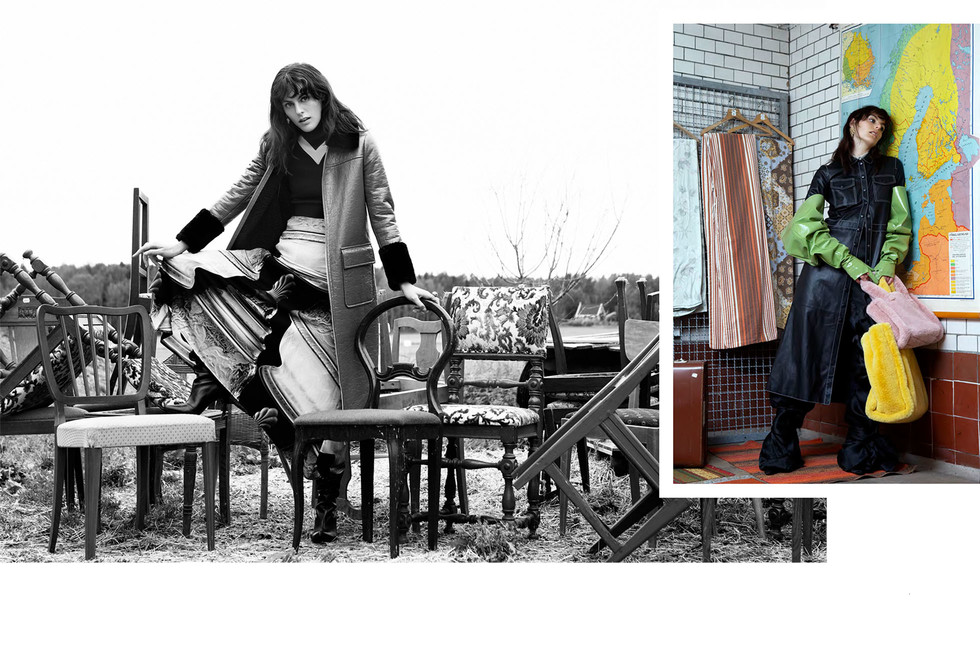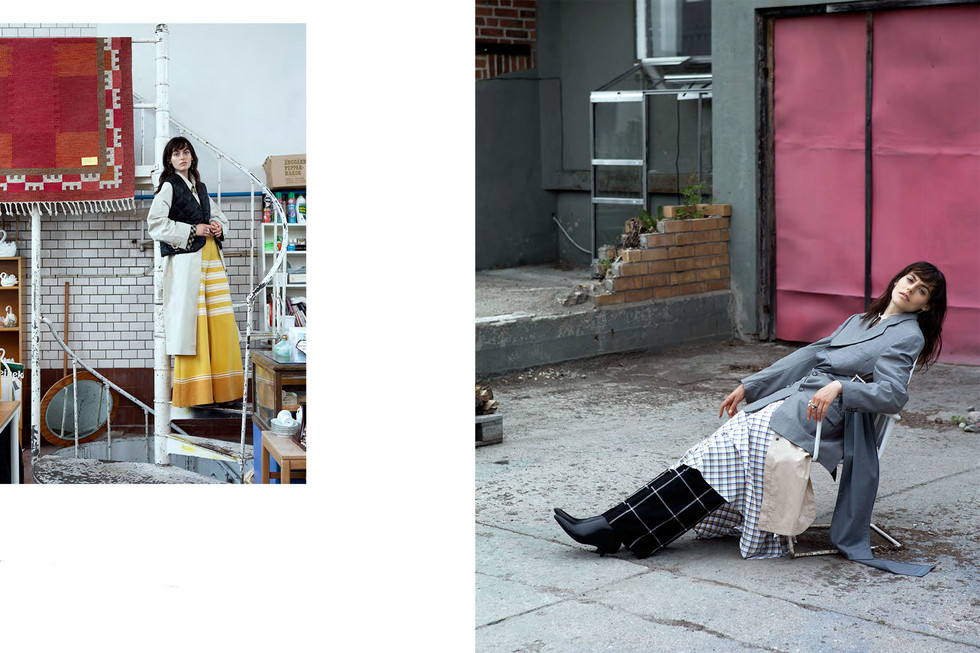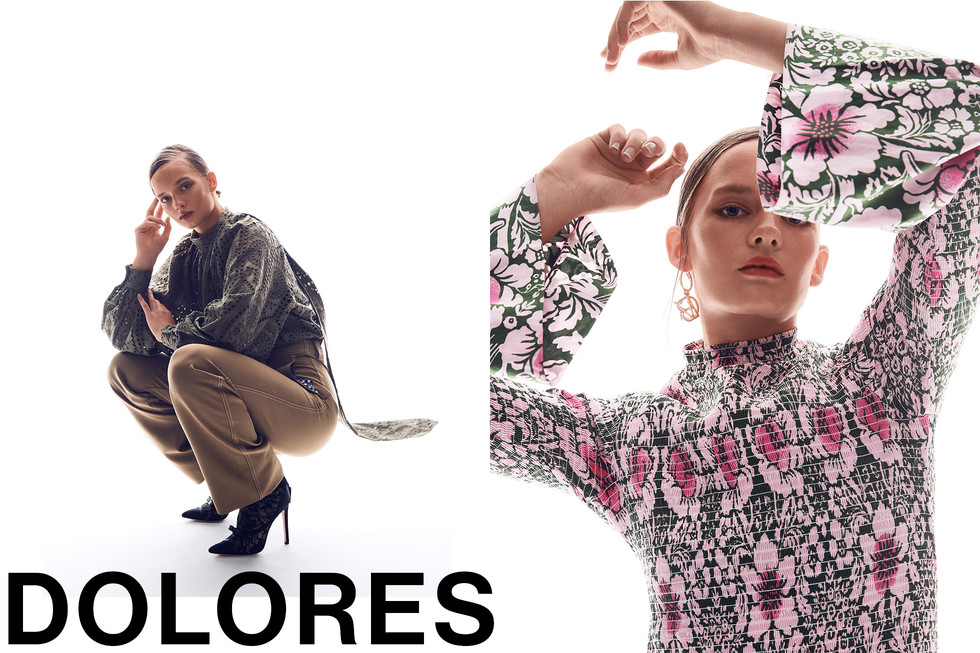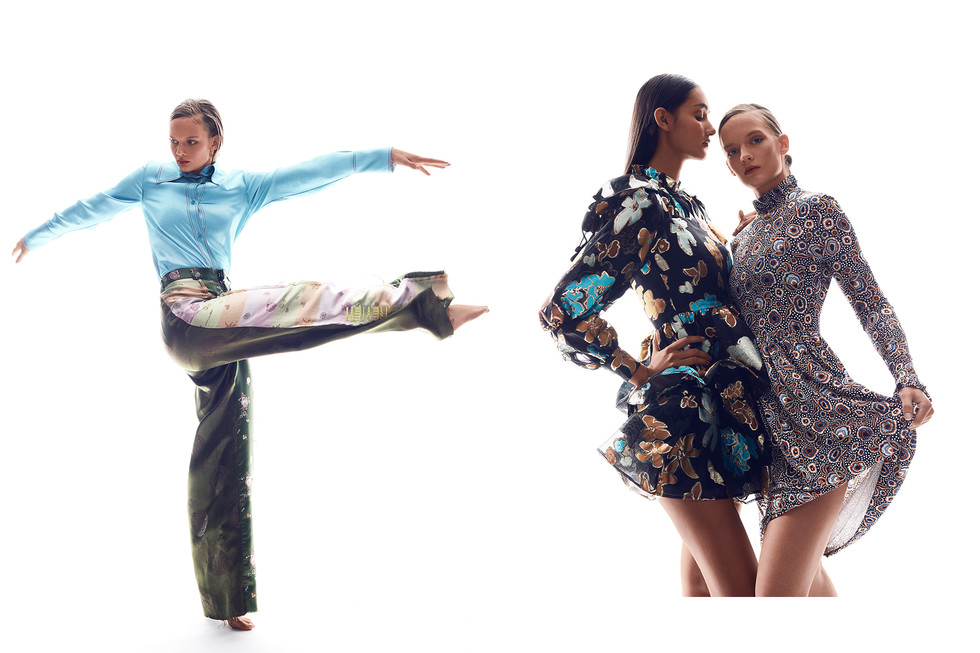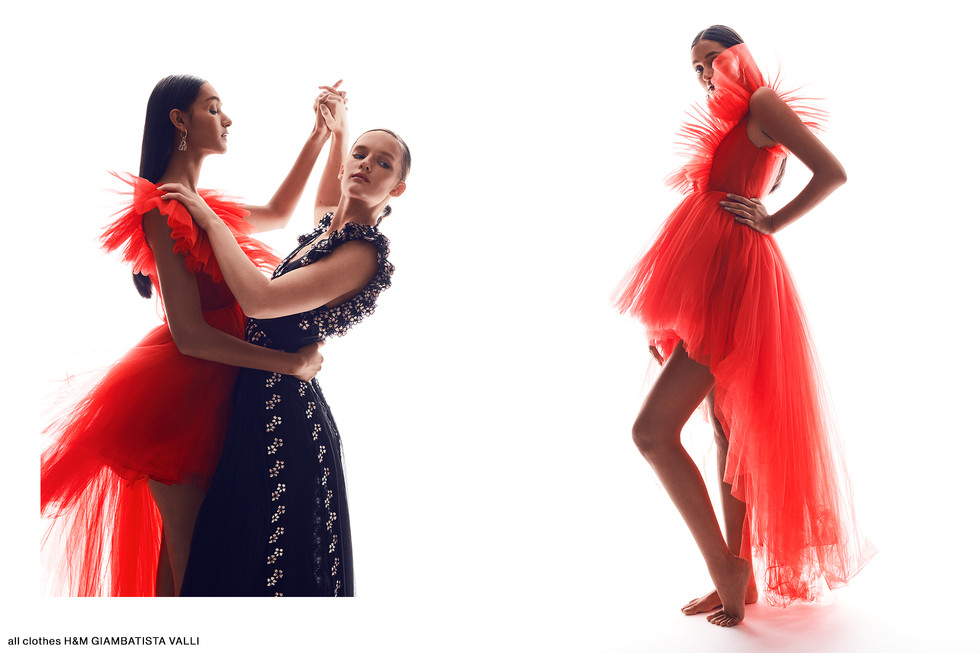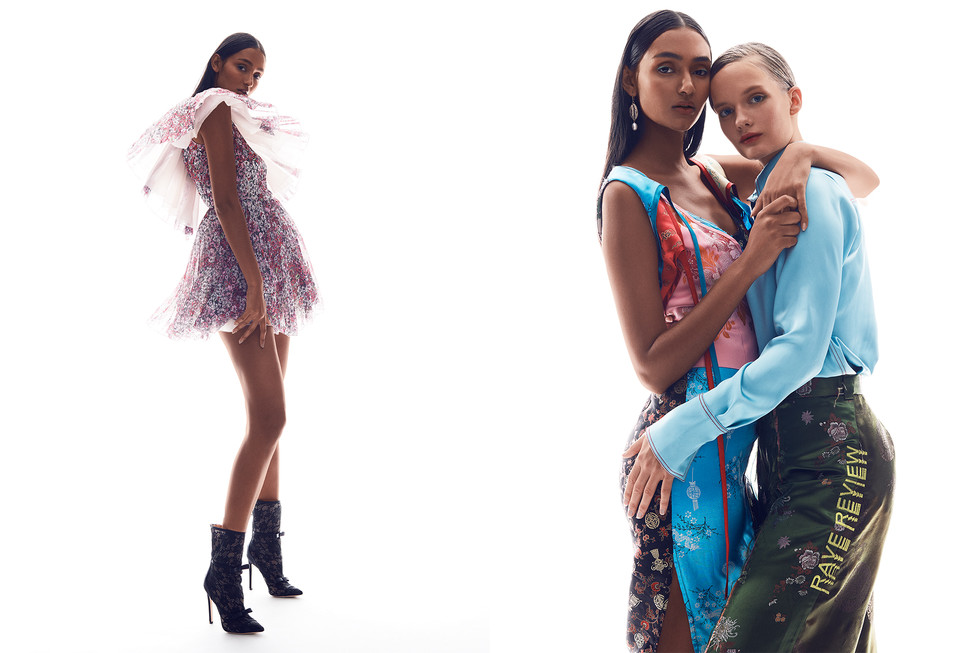Representing a big business, fashion has never before been such a personal storytelling as it currently appears to be. Cultural heterogeneity has emerged into a big designer mood board, leaving the consumer with a tremendous space for a personal stylistic interpretation. However, with the freedom of artistic expression follows the consequential responsibility of choice. As a modern fashion designer, you share the burden of responsibility with your clients by trying to understand your own role within the fluctuating world of fashion.
Fashion designer Ida Klamborn perceives her ontology as a fair and transparent player with strong personal ideas and beliefs, which she generously bestows her clients with through her expressive postmodern aesthetics. In her skilfully tailored fashion mini-empire, transparency literally takes its place to celebrate the female body, both when it concerns design and communication. Another important element is the feeling of community that never disappears, not even backstage. Ida turns fashion experience into a welcome-home party, where everyone can create a value and find a meaning. It also conceives an auspicious environment for comprehending the causality between the choice you make and the impact the latter has on the world around you. Furthermore, daring to break the rules, the designer places her own fears at stake, setting up an engaging discourse regarding ‘comme il faut’ and ‘faux pas’, embracing different spheres of the social existence.
What made you choose your designer education, and Borås in particular?
Well, there is an immense answer to that. Back in my childhood, my interest in clothes was very intensive, especially because I was quite shy and found my expression preferably in garments instead of words. I did not discover a possibility of being a designer till I turned twenty one. At that time, following my desire to change the place of living, I randomly moved to Gothenburg and enrolled in an evening class in pattern making. There, I learned about Borås and realised that I could actually study fashion design at the Swedish School of Textiles. I sent my application to the school and was offered admission.
What have you learned under the years in Borås that stays with you even today?
You always have to try, even though you are afraid of making a mistake and failing. Takeaways from your own mistakes follow you to the next project and develop your skills further. It is a certain constructive problem-solving strategy, where you grow as a professional and as an individual. Without committing such mistakes you are not able to create something really beautiful.
Your Bachelor’s Degree collection received the Italian Fabric Award, which resulted in a collaboration with an Italian fabric company and an exhibition during Milan Fashion Week 2012. How did you feel about being thrown directly into the heart of the fashion world?
It was a lot of fun. The positive thing about it was that I ended up in an international context, where I could meet people, talk to and learn from them. After having gone to school and being busy with practically only the studies, it was very refreshing experience to come out and speak for myself. However, the biggest challenge was to deal with my timidity. It became my first Fashion Week ever and I was there on my own, representing myself.
Your collections bear rather special titles such as ‘Mono’, ‘Trace’, ‘Made You Look’. How do you appoint a title for your collections?
Often, it is an association game that includes at least one personal fragment in my creative process, which I build a new story on, leaving the working title unchanged. That was the story with ‘Messy Love’ (2015), for example, which had derived from an unfortunate love narrative.
Red and pink hues have appeared in almost every collection that you have created. What do you consider special with these two particular hues?
As a child you used to learn the classic rule that pink and red should never be combined in the one and same outfit because those are contradictory. It has given rise to a desire to merge these colours together and to thus, break the rule. Furthermore, pink is considered to be a girly colour and as a child, I admired that aesthetic. Growing up, I started realising that pink actually was not perceived as something fancy and chic. Due to the society’s celebration of male coded attributes, it became quite intrinsic that the colour assumed to be femme and girly and, presumably, less important. Seemingly, I feel that under my entire career I try to justify the status that pink and its aesthetics deserve as a colour on a wardrobe level and also worldwide. In addition, the colour has frequently been applied within the fashion industry under the last three years in many different intriguing ways.
You have introduced at least one garment with a transparent element or an entire transparent garment in every collection. What is the message behind that transparency?
In 2018, I made a small collection, showed on a tiny space had my friends as models, is was very much about a self-gaze and the female gaze. My intention is alway to recant the public eye following the body that transparency leaves exposed. It is for the purpose of protection of one’s own body, but also for an artistic reason as well. It creates a peculiarly beautiful contrast betweenm a fragile side and a robust one, of the human body and personality.
Have the models, introducing the transparent garments, said anything about their experience of wearing those?
The most of the models actually like wearing such items. For the show Autumn/Winter 2018 show I made an entirely transparent white, tight dress with a great portion of glitter, which was presented by a model, who was a friend of mine. She wore the garment on her naked body, where her vulva was clearly visible. Surprisingly, the dress made her feel strong and attired, in spite of its transparent nature. It gives rise to an intriguing disparity though.
Additionally, in one of our recent photo sessions we used a top, which was entirely transparent. The model wearing the item, felt slightly nude but we solved it by putting small diamond circles on her nipples underneath the top. Such a small manipulation made her actually feel dressed and it became a nice, sort of, ‘Instagram’- friendly version of it.
How do you choose models for the demonstration of your creations?
Usually, I follow my gut feeling and a girlfriend-sense. At my first show I had agency models but for the next show I wanted someone out of my own social circle. However, there is nothing wrong with professional models. The reason is that during photo sessions andm shows I would like to have more personal atmosphere backstage. It also has impact on the way they are walking during the show. Having a couple of friends backstage, makes all the participants become harmonious and self-confident. Later when the show starts, they go out on the catwalk as their own community and make the best of it. They create an authentically positive feeling, making the show more real and thus, more immersive for the audience.
You once had a collaboration with photographer, Patricia Reyes, celebrating fifteen Swedish women. What product do you think you and Patricia have created letting fashion and fashion photography meet in an intriguing show-room context?
Patricia and me are both quite empathetic and headstrong at the same time, what have created a fruitful and stimulating teamwork. Our collaboration started with me being offered to show my
garments at an exhibition. Nevertheless, the idea continued growing and taking shape and we decided to invite different women to be a part of that exhibition instead of merely filling up the exzhibition space with clothing. It resulted in a three-meter high women-tapestry that we covered the whole room with.
She would have an idea and people around would like it. Everything felt very organic during the working process. We worked with a mood board, mostly visualising our thoughts there. The ideas were emerging during the photo session and we just let it happen, following in the process after our ideas. I would make a suggestion and we would take it or leave it aside and the same would be for Patricia. Hence, we were conceiving the product ‘live’ by letting our ideas emerge during the creating process as such. The result was not predetermined, what also felt slightly frightening but we succeeded.
Your design looks to be inspired by the 1980s aesthetics but you seem to make own 1990s interpretation of it. What do you usually become inspired by?
I am inspired by people and how they wear their clothing. Older ladies is a special issue, because I find them very inventive. It is admirable how they can put together an outfit out of practically simple things, such as a shawl for example. I used to sit at a café watching older ladies to pass by. Further, I also find other people’s creativity inspiring. It could be anything, art, fashion, film or photography.
Recently, you have chosen to abandon the so called ‘runway format’. How do you work now?
When you compare the experience of attending a classic fashion show with the mood of an intimate collection presentation, you suddenly realise how personal and authentic the latter format feels. Feeling as a part of the event, the audience perceive the concept in a more advantageous way. And I also have an opportunity to talk to them in person. Accordingly, my brand stands out in a clear and concrete way. Undoubtedly, you reach a broader audience with the ‘runway format’. However, in my case the intention is to create a universe around my brand, where I want to be and where I want my audience to came to. I want also to have a certain type of music and to invite people I would love to see participating in my shows.
Does you decision have something to do with the aspect of sustainability?
Currently, I am at a crossroad since two years back, pondering over my relationship with the fashion industry, which I am actually a part of. My main puzzle is how I can make a difference by conducting changes in the parts of my own business. For me it is much easier to look over and modify my routines or strategies than for a big brand to change the whole ecosystem around with suppliers, retailers, investors and other stakeholders. It feels like I have put the collection format on hold. Now I have conducted Spring/Summer 2020 collection, which actually consists of quite few pieces. I produced only pieces that I think my clients may like and nothing beyond that.
When did you actually realise that you had become a brand?
I think it happened three years ago, when I had a big fashion show, became depicted in Vogue and commenced a few collaborations. All of a sudden, I felt that I should treat my activity as a brand, in order to keep myself apart from it. It had been very personal from the beginning but it was time for a change to avoid the whole idea
to become messy.
What project are you currently working on?
Now it circles around a textile fair in Paris and later I will start up an independent project, concentrating primarily on sustainability. It will be kept out of limelight for a long period, because I want to deepen into the managerial part and form a structure. However, it is going to be a smaller sub-brand in an affiliated company with ’Ida Klamborn’ as a parent brand. My intention is to conduct a research on some textiles and test recycle alternatives and production opportunities by following the whole production chain.
What could you tell us about influencers when it comes to your brand?
I have a mixed feelings about that phenomenon. Five or six years ago I would put a top on a friend and let her take pictures and post
those on Instagram. The whole scenario would be a kind of influencer strategy. An influencer is the one who can have a strong effect on someone or something. However, there is a risk for inflation if one just posts photos of different products, while losing own personality. I find it more exciting to behold someone, who is doing something that he/she really enjoys. Then, I feel a strong connection to my own creative activity and therefore, perceive it as something authentic and trustworthy.
What do you think will happen to fashion in general and Swedish fashion in particular in ten years?
I think that those big clothing chains might disappear because they will be too big to be able to keep control over consumers, who become more and more aware of what is going on and what should be done. It felt slightly liberating not to have a proper Fashion Week in Stockholm this year. Apparently, things were happening anyway and there was an artistic feeling about it. Maybe it is a beginning of a paradigm shift and something new is about to emerge. Stockholm Fashion Week started in 2001. So, it is time to have some changes. Let us see what to expect.
Do you have any dream project?
I would love to work with a film production, making character costumes and especially working on the image part. To be able to create a contemporary story with female characters wearing those costumes would be a dream.

